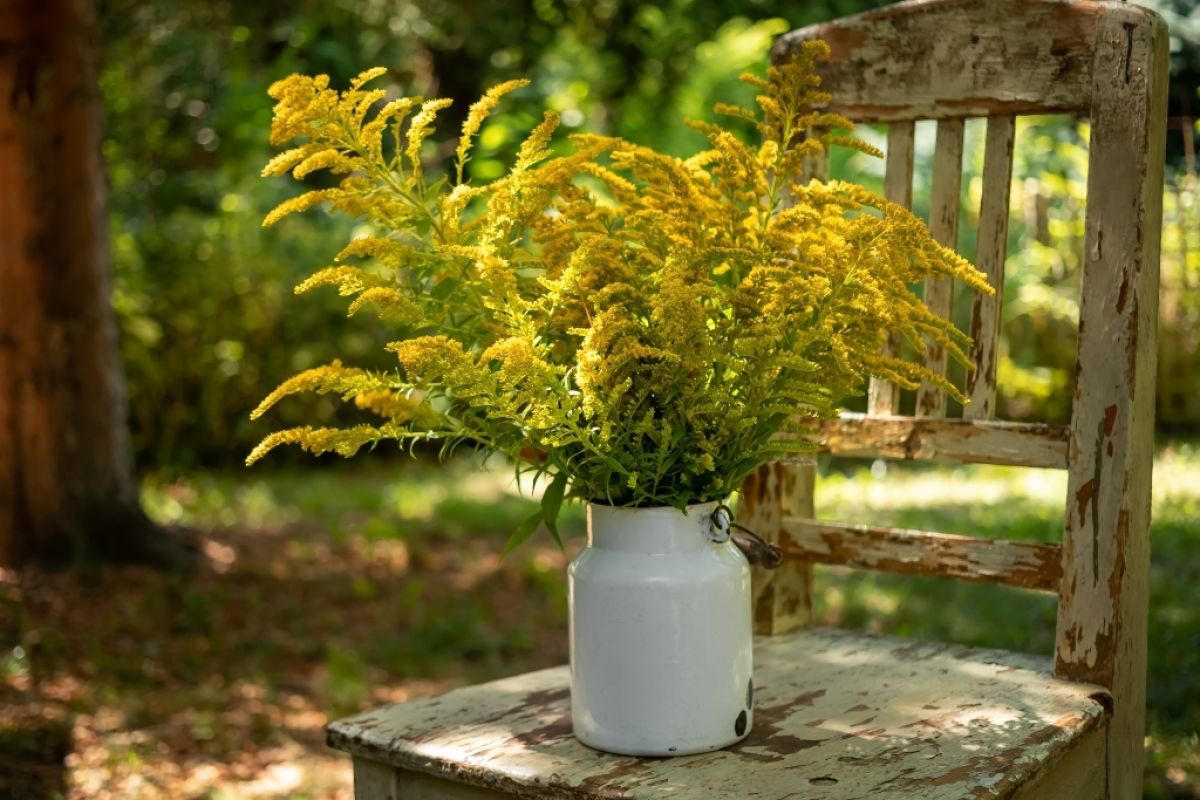There are two types of our native goldenrod that grow in North America. One is the Canadian type known as Solidago canadensis, which is found from Newfoundland to Saskatchewan, and as far South as Tennessee. It loves sun and open fields, is 3 to 5 feet tall, and blooms from August to October.
The other type blooms later and is native to salty marshes, dunes, and rocky areas along the Atlantic Sea from Nova Scotia to Texas. It can grow to 8 feet on seasides and has thin leaves and tighter flower panicles. It is called Seaside goldenrod with the botanical name of Solidago sempervirens.
When goldenrods are in bloom, it indicates that fall is in the air. They do, however, spread rapidly, and their candidates for the old method to contain spreading plants, which is to plant them in the garden in a bucket with no bottom.
They do not cause hay fever (That is ragweed!), as the pollen of goldenrod is too heavy to be dispersed by the wind. Bees and butterflies and other insects are the ones who fertilize these plants, not the wind.
For flower arrangements, cut the flower stalks before they're fully open.
This is Moya Andrews, and today we focused on our native solidago.










